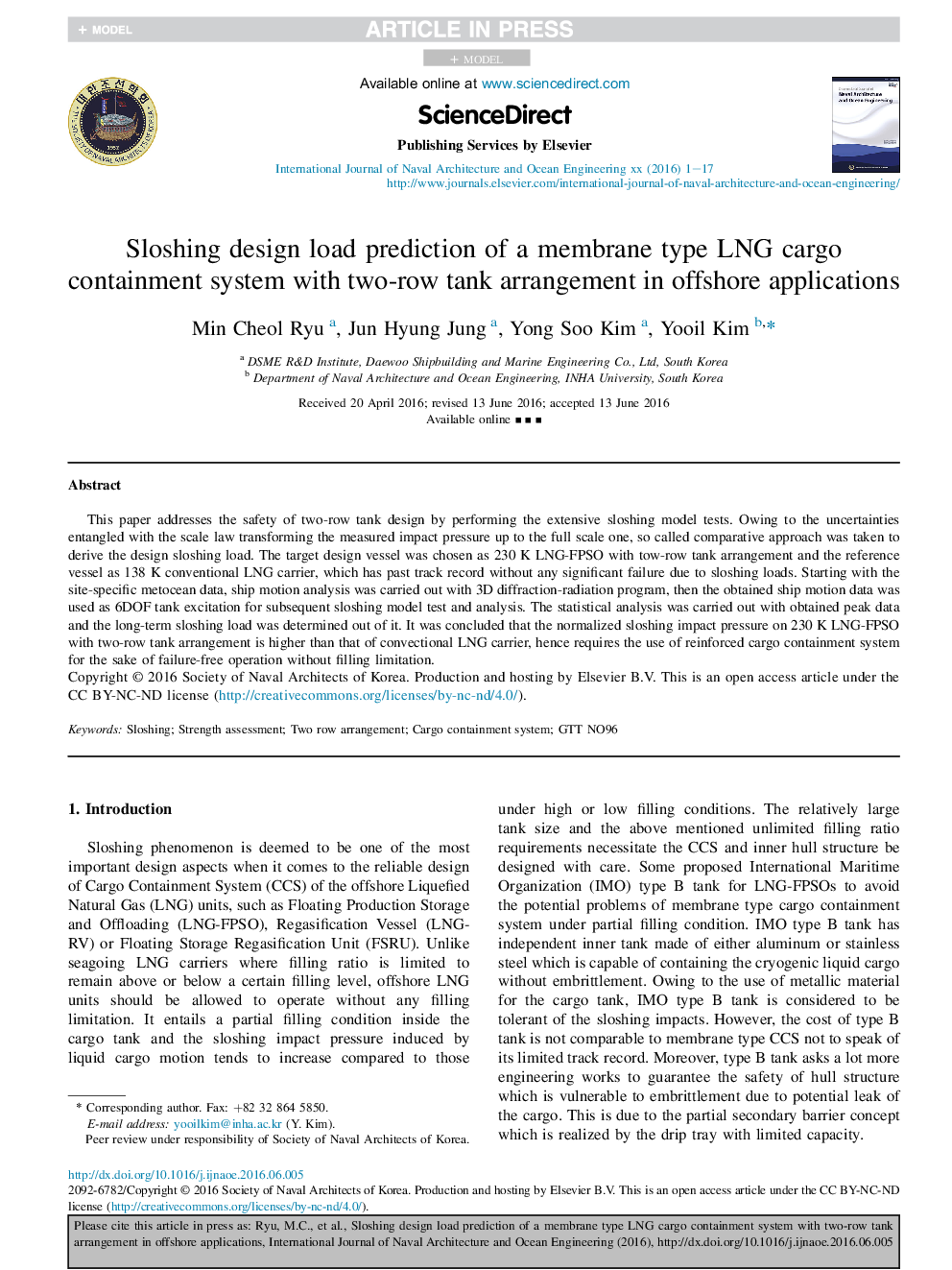| Article ID | Journal | Published Year | Pages | File Type |
|---|---|---|---|---|
| 8865075 | International Journal of Naval Architecture and Ocean Engineering | 2016 | 17 Pages |
Abstract
This paper addresses the safety of two-row tank design by performing the extensive sloshing model tests. Owing to the uncertainties entangled with the scale law transforming the measured impact pressure up to the full scale one, so called comparative approach was taken to derive the design sloshing load. The target design vessel was chosen as 230Â K LNG-FPSO with tow-row tank arrangement and the reference vessel as 138Â K conventional LNG carrier, which has past track record without any significant failure due to sloshing loads. Starting with the site-specific metocean data, ship motion analysis was carried out with 3D diffraction-radiation program, then the obtained ship motion data was used as 6DOF tank excitation for subsequent sloshing model test and analysis. The statistical analysis was carried out with obtained peak data and the long-term sloshing load was determined out of it. It was concluded that the normalized sloshing impact pressure on 230Â K LNG-FPSO with two-row tank arrangement is higher than that of convectional LNG carrier, hence requires the use of reinforced cargo containment system for the sake of failure-free operation without filling limitation.
Related Topics
Physical Sciences and Engineering
Earth and Planetary Sciences
Oceanography
Authors
Min Cheol Ryu, Jun Hyung Jung, Yong Soo Kim, Yooil Kim,
